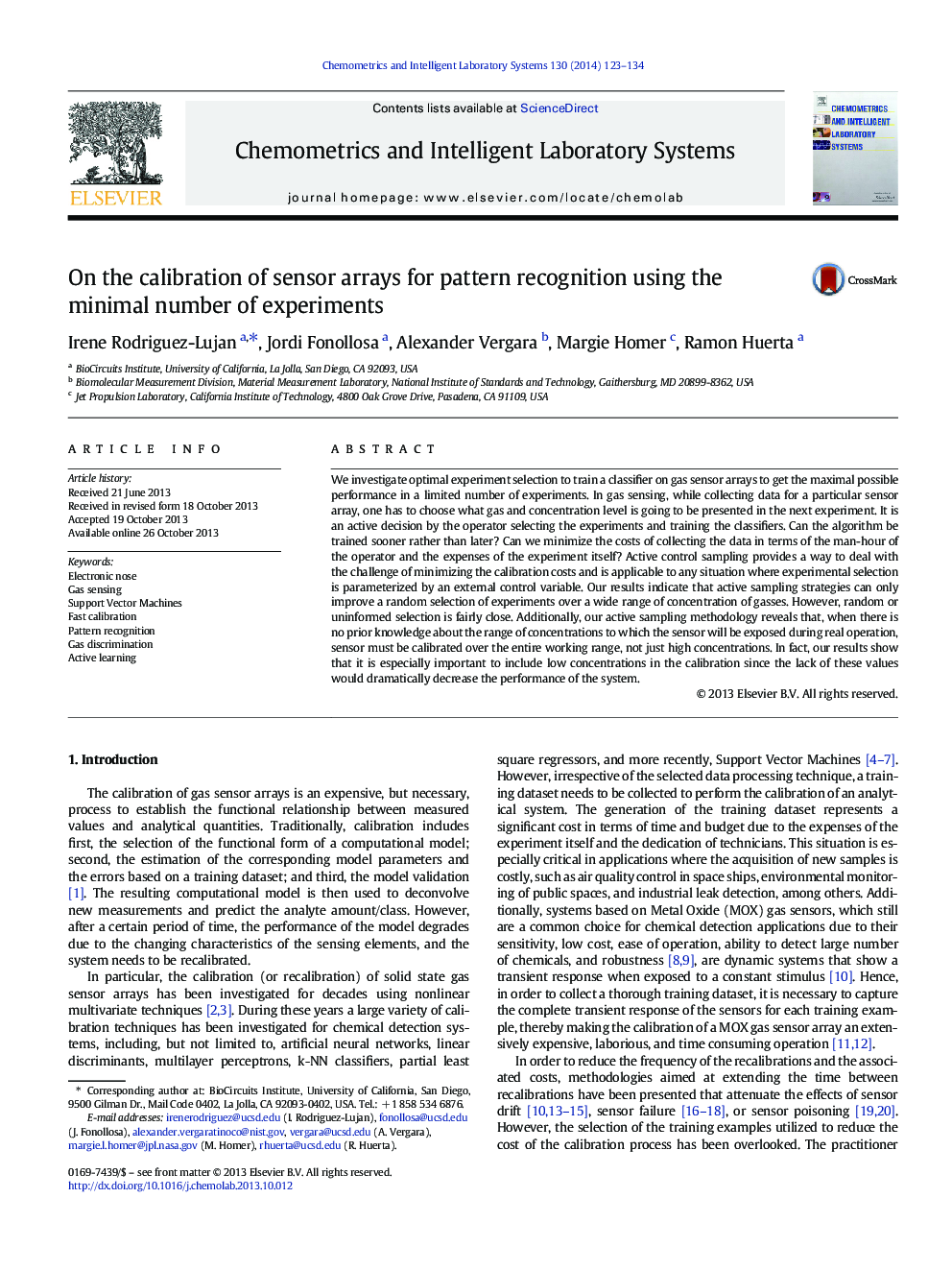| کد مقاله | کد نشریه | سال انتشار | مقاله انگلیسی | نسخه تمام متن |
|---|---|---|---|---|
| 1180676 | 1491548 | 2014 | 12 صفحه PDF | دانلود رایگان |
• Fast calibration of gas sensor arrays on a limited number of experiments
• Analysis of the performance of active control sampling for experiment selection
• Analysis of the performance when calibrating in different ranges of concentrations
• Extensive dataset of 1800 gas recordings of three gasses
• Active sampling strategy can only improve non-informative/random sampling
We investigate optimal experiment selection to train a classifier on gas sensor arrays to get the maximal possible performance in a limited number of experiments. In gas sensing, while collecting data for a particular sensor array, one has to choose what gas and concentration level is going to be presented in the next experiment. It is an active decision by the operator selecting the experiments and training the classifiers. Can the algorithm be trained sooner rather than later? Can we minimize the costs of collecting the data in terms of the man-hour of the operator and the expenses of the experiment itself? Active control sampling provides a way to deal with the challenge of minimizing the calibration costs and is applicable to any situation where experimental selection is parameterized by an external control variable. Our results indicate that active sampling strategies can only improve a random selection of experiments over a wide range of concentration of gasses. However, random or uninformed selection is fairly close. Additionally, our active sampling methodology reveals that, when there is no prior knowledge about the range of concentrations to which the sensor will be exposed during real operation, sensor must be calibrated over the entire working range, not just high concentrations. In fact, our results show that it is especially important to include low concentrations in the calibration since the lack of these values would dramatically decrease the performance of the system.
Journal: Chemometrics and Intelligent Laboratory Systems - Volume 130, 15 January 2014, Pages 123–134
